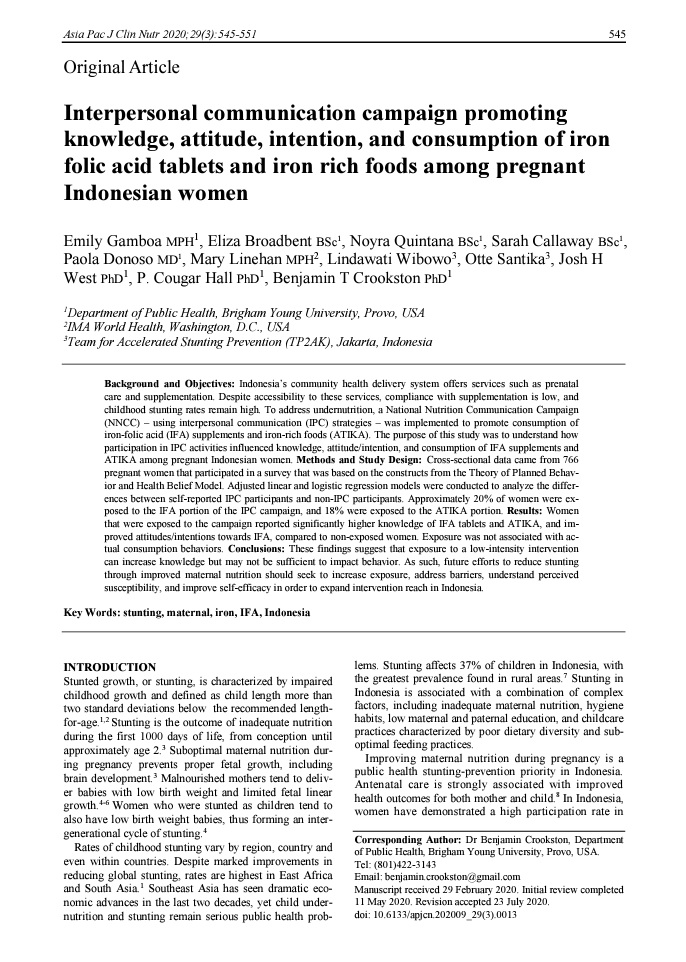Interpersonal communication campaign promoting knowledge, attitude, intention, and consumption of iron folic acid tablets and iron rich foods among pregnant Indonesian women
Publication Year: July 2020
Authors: Emily Gamboa, Eliza Broadbent, Noyra Quintana, Sarah Callaway, Paola Donoso, Mary Linehan, Lindawati Wibowo, Otte Santika, Josh H West, P Cougar Hall, Benjamin T Crookston
Contributing Organization: Asia Pacific Journal of Clinical Nutrition
Background: Gamboa et al. 2022 is a cross sectional study of pregnant women in South Sumatera, West Kalimantan, and Central Kalimantan provinces in Indonesia following the National Nutrition Communication Campaign (NNCC). The purpose of this study was to understand how participation in the IPC activities impacted maternal knowledge, attitude, intention, and consumption of prenatal IFA supplements and ATIKA foods among pregnant Indonesian women.
Methods: Three- stage cluster sampling was used for approximately 30 clusters that randomly selected from 3 districts, resulting in a final study sample of 766 pregnant women. The Theory of Planned Behavior and the Health Belief Model provided a framework for the survey items, which intended to ascertain respondents’ knowledge, attitudes, intentions, and behaviors related to taking IFA supplements and eating ATIKA foods during pregnancy.
Results: The mean age of respondents was 27.7, many had completed at least primary school, were unemployed/housewives and Islamic. Knowledge was high regarding benefits, and when/how to consume IFA tablets, but low on the side effects of IFA. Attitude and intention towards ATIKA were similar to those of IFA while knowledge was lower. Involvement with the interpersonal communication aspects of the NNCC intervention was associated with significant differences in knowledge of IFA and ATIKA. Participants had higher knowledge of the following: IFA benefits, side effects, how to consume, when to consume, ATIKA benefits, and consequences of iron deficiency. Participants also demonstrated increased odds of believing they needed to consume and intent to consume IFA. No differences were found between the three provinces from which data were collected.
Conclusions: Programs that utilize these constructs (knowledge, attitude/intention, and behavior) may be able to increase compliance to IFA tablet supplementation even in the presence of other barriers. Higher knowledge was not sufficient for improving attitude/intention or behavior regarding ATIKA in the intervention group, suggesting other factors may need to be addressed to improve maternal compliance (more holistic approach). Future interventions to improve compliance with ATIKA should strive to ensure high exposure, address barriers, understand perceived susceptibility, and improve self-efficacy.

